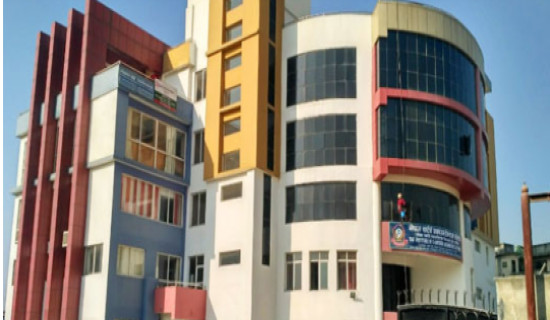- Thursday, 8 January 2026
58thAnniversary Special Supplement
The Rising Nepal In The Digital Age
Somewhere in the middle of the Gita, the Hindu spiritual scripture composed probably some 2,300 years ago, it is written that Ewam Gyatwa Kritam Karma (action is determined by knowledge). It fully illustrates that our activities are simply manifestations of our knowledge. Undoubtedly, what the scholars said so long ago is still the truth and will remain so even in the future. The source of knowledge or information for the human being has changed over time, but the way knowledge shapes their behaviour or actions has remained the same.
Internet as source of knowledge
The Internet has revolutionised the source of knowledge for mankind in the present age. If books and newspapers, products of printing machines, were the main source of knowledge and information in the near past, it is the internet at present. It has ensured easy and swift access to information. With the internet, news-making, disseminating, and receiving processes and channels have also changed. One does not have to wait for another day to know about today’s events via means of dailies or some hours through electronic news media such as radio and television. Due to the internet, one can get information about events and issues as they happen or develop. The Internet, which marked the information age, has turned the world into a global village, narrowing down the distance and time to get information about events happening in faraway locations.
Access to the internet has become something of a basic need now. It is an integral part of the present time, known as the digital age or information age. The Internet has become a means for spreading rumours too. Needless to say, online news portals, different types of apps, and social media all exist because of the Internet.
The use of the internet started in Nepal in 1995, five years after it was launched globally. In the last 28 years, there has been an unprecedented change in the way people get information, even in remote areas of the country. According to a report, over 16 million people (over 55 per cent of the total population) use the Internet in the country. In 2022, Nepal ranked 112th out of 131 economies in the Network Readiness Index, a global index on the application and impact of information and communication technology (ICT) in global economies. The country stands 101st out of 160 countries on the National Cyber Security Index. Nepal ranked 125th out of 193 countries in the e-government development index in 2022.
Social media and rumours
Social media users have increased in Nepal drastically. Social media are a window into society, as they reflect what people are thinking and are likely to do. Nepal was home to 12.60 million social media users in January 2023, equating to 41.0 per cent of the total population. According to a report by GSMA Intelligence, a total of 42.78 million cellular mobile connections were active in Nepal in early 2023, with this figure equivalent to 139.2 percent of the total population. The greater number of mobile users than the total population of about 30 million only indicates that a person is using more than one mobile SIM. Data published in Meta’s advertising resources indicates that Facebook had 11.85 million users in Nepal in early 2023. Similarly, numbers published in Twitter’s advertising resources indicate that Twitter had 553.6 thousand users in Nepal in early 2023.
With the increasing use of the internet and social media, the risks of the fast circulation of rumours, misinformation, and disinformation have also increased. The number of cybercrimes has also skyrocketed over the period, from hundreds a year in the recent past to thousands a year now. The cases of Dharan in August and Nepalgunj in October exemplify how rumours, misinformation, and disinformation spread through social media can threaten social security and harmony. The government had to clamp down on curfews in Dharana and Nepalgunj to prevent possible communal clashes.
Rumours run through digital mediums such as social media when those providing true information lag in adapting and adopting to the use of such mediums. Institutional media such as The Rising Nepal, which provides evidence-based, truthful, and balanced news and views, have a greater role given such a situation.
TRN’s digital journey
Although content from The Rising Neal (TRN) entered the internet some 25 years ago, the news portal of the nation’s first and foremost daily started only about a decade ago. With risingnepal.org.np, the paper started having its news portal. Although news reports from some influential media, such as the BCC and AP, posted online some two decades ago are easily available even today, TRN’s content published online in its previous domain has disappeared due to the server crash. One has to overcome different barriers even to access the content published in the domain used just before the current one. This only shows slackness in the way we work and the safety measures we adopt.
As with other institutional news media, TRN does have its online edition and presence on social media sites such as Facebook and Twitter. In addition to posting content published in the newspaper, fresh news items are prepared and posted daily, or, let’s say, as events occur and issues crop up and are shared on social media. However, its presence has not been as strong as expected.
Print media has its role, but digital media has a dominant say in the present age. Everyone knows this common sense. However, there is a problem in knowing and doing, especially with regard to TRN. If one does not act as per the knowledge, if Gyatwa mismatches with Karma, the result is a failure. Being a state-run media, TRN must adapt to the digital age. The government must come up with concrete measures to bolster the news media so that their digital presence is dominant and that they are the main source of information for the people.
(Tiwari is a sub-editor of this daily and the coordinator of its online edition, risingnepaldaily.com.)

















